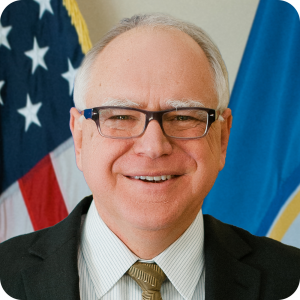4-15-2020 COVID-19 Update from MN Governor Tim Walz and MDH
MN Governor Walz & Minnesota Department of Health COVID-19 Update 4-15-2020


On Wednesday, April 15, 2020, Governor Tim Walz joined the Minnesota Department of Health (MDH) and other state officials to provide updates on Minnesota’s response to COVID-19.
Update from Governor Walz:
-
- Today’s a day to rejoice because, this morning, the Alex Smith Insulin Affordability Act was signed. (Act was named after a man who died rationing his insulin because he couldn’t afford the monthly cost). Proud of the legislature for coming together to make this happen.
- Our Minnesota sports teams put together a video that will make you look forward to sports coming back in our lives.
Together we are #OneMN. pic.twitter.com/CrPS6dT1Ge
— Minnesota Twins (@Twins) April 14, 2020
- MNsure special enrollment period is open. In March, announced a special 30-day enrollment period for COVID-19. The deadline to enroll is Tuesday, April 21.
- DEED continues to lead the nation in implementing the CARES Act as fast as possible.
- Today would usually be tax day, but MN is providing time until July 15 for taxpayers to file and pay without penalty or interest. If you have a refund coming, file and file early.
- The U of M has received FDA approval for the design of a new low-cost ventilator aimed at helping clinicians in settings where you can’t usually get a ventilator. It’s called the Coventor. It’s the first of its kind to be authorized for use under the FDA’s emergency COVID authority, it was funded by the U’s rapid response grant that spurs innovation around treating the virus. The Coventor is relatively inexpensive to manufacture. Its specifications will be put out on an open source online to allow other manufacturers to begin their own regulatory production process worldwide.
 How COVID-19 is impacting our community
How COVID-19 is impacting our community Find all of our latest COVID-19 stories here
Update from Department of Health Commissioner Jan Malcolm:
- Global totals of COVID-19, 2 million cases and 127,000 deaths
- In US, 609,685 confirmed cases and 26,000 deaths
- In MN, 114 new cases for a total of 1,809. Eight additional deaths, bringing our total to 87. The eight deaths were heavily concentrated to elderly people.
- As of today, 197 patients in the hospital, and 93 of those are in intensive care
- As of today, 940 patients released from isolation
- We have a concern about long-term care facilities, the residents and employees face higher risk of infection. We’ve been working hard with those care providers to ensure safe conditions. We absolutely need to maintain our vigilance.
- Seeing evidence that our work in the long-term care facilities is having a positive impact. Of the 108 facilities with confirmed cases, half of them only have one case. We still have a long way to go to make sure we’re supporting these workers and the residents.
Update from Homeland Security and Emergency Management Director Joe Kelly:
- Severe Weather Awareness Week topics
- Today’s focus is on flooding. From time to time our water turns on us and MN is one of the most flood-prone states in the country. It is our No. 1 natural disaster threat. MN has experienced 28 major flood events that triggered a state or federal disaster declaration.
- Two key messages: Turn around, don’t drown. Never drive through flood waters. Never drive around barriers. Second message is to buy flood insurance through the national flood insurance program. As always, consult with your insurance professional. FEMA disaster relief is no substitute for flood insurance.
- At 1:45 tomorrow most counties will activate their tornado warning systems.
- At 6:45 tomorrow evening, most counties will activate their warning systems again. We do that because we take different action, depending where we are. These drills are important for the summer season.
Update from Department of Employment and Economic Development Commissioner Steve Grove:
- The 13-week extension from the CARES Act has now been fully implemented
- All you have to do is log into your account, let them know that you remain unemployed, and you’ll be eligible for the extra 13 weeks of unemployment insurance funds.
- The unemployment benefits for the self-employed and the contract workers should be ready by the end of April.
- We do encourage all people who are self-employed or a contract worker to apply for those benefits now.
- As of today, we’re at 464,513 applications for unemployment insurance in MN
- Paycheck protection program gives loans to businesses so they have money to continue to make payroll. We’re grateful to our partners in the FDA who have made sure that the money is available to Minnesotans.
Additional Notes from the Meeting:
- Commissioner Malcolm was asked whether people should start bringing home loved-ones who are in long-term care facilities. Malcolm said that long-term care facilities are still usually the safest environments for our loved-ones. “While all facilities need to be vigilant, and we need to be helping those that encounter challenges from staffing or from spread, and we are doing that. But in general we believe these are good environments for our seniors.”
- Governor Walz received a question about how it seems unrealistic to significantly ramp up testing by May 4. The governor say that every single governor is expressing this deep concern. At the end of March, we were told that “everybody who wanted a test could get one, and the federal government took charge of that. They stopped the supply chain lines. They took them in and they sent them to these private labs. That was going to be the plan. Well, apparently now they have given up, to a certain degree, on that because yesterday the President was very clear, and he said the states are responsible for testing. And so we have been under the impression for several weeks — and my sense of urgency over the last ten days has been through the roof — that there is not going to be a federal response to this…” Meaning that the states are now going to have to figure out how to get the testing done. The governor says that Minnesota has resources unlike other states with the Mayo Clinic and the University of Minnesota. “I am asking to challenge this team and this state to break that mold of where it’s at. I do believe we can get to that 5,000 [testing] number a day.” The testing component is how we get back to normalcy.
- The health officials received a question about whether the serology tests would indicate a level of immunity that’s sufficient. “Not all serology tests are created equal, so it’s important that you recognize that,” said Kris Ehresmann, the infectious disease division director for the MDH. She went on to say that, “The things that we don’t know about serology testing — even when we have a great methodology that’s validated are — we’re still learning about the level of protected immunity, so how much antibody do you need to have to have protection? And what is the duration of that protection?”
- The MDH will look into the mechanism for tracking the results of the serology tests that are administered to people.
- State officials say we’re in a better position now than we were a couple of weeks ago in terms of procuring personal protective equipment (PPE). “We’ve really focused on finding those PPE suppliers who are trusted and who we know can get us the inventory we need into the state. We’re feeling really good about some corporate partners that we’ve been able to leverage and leverage their supply chains as well. So we are starting to see a pretty steady flow of PPE into the state that we’re able to get to our frontline health care workers,”said Alice Roberts-Davis, Commissioner of the MN Dept. of Administration.
- Health officials received a question about prioritization criteria for testing. Commissioner Malcolm said the most important people would be those who are in the hospital, people in long-term care or other congregate care facilities, health care workers, people in homeless shelters, people in critical service industries like child care, and first responders.
- The governor received a question about why testing is so important in terms of getting people back to work. He said, “It does us no good to send everybody back to work and then get everybody sick. What it does do us good is to be able to send folks back to work who, 1) may be immune because they’ve had it, 2) have just been tested and they’re symptom-free, and 3) we have the resources necessary should someone get sick that it doesn’t become a hotspot,” Walz said.
 How COVID-19 is impacting our community
How COVID-19 is impacting our community
Find all of our latest COVID-19 stories here
Brooklyn Center | Brooklyn Park | Crystal | Golden Valley | Maple Grove | New Hope | Osseo | Plymouth | Robbinsdale


